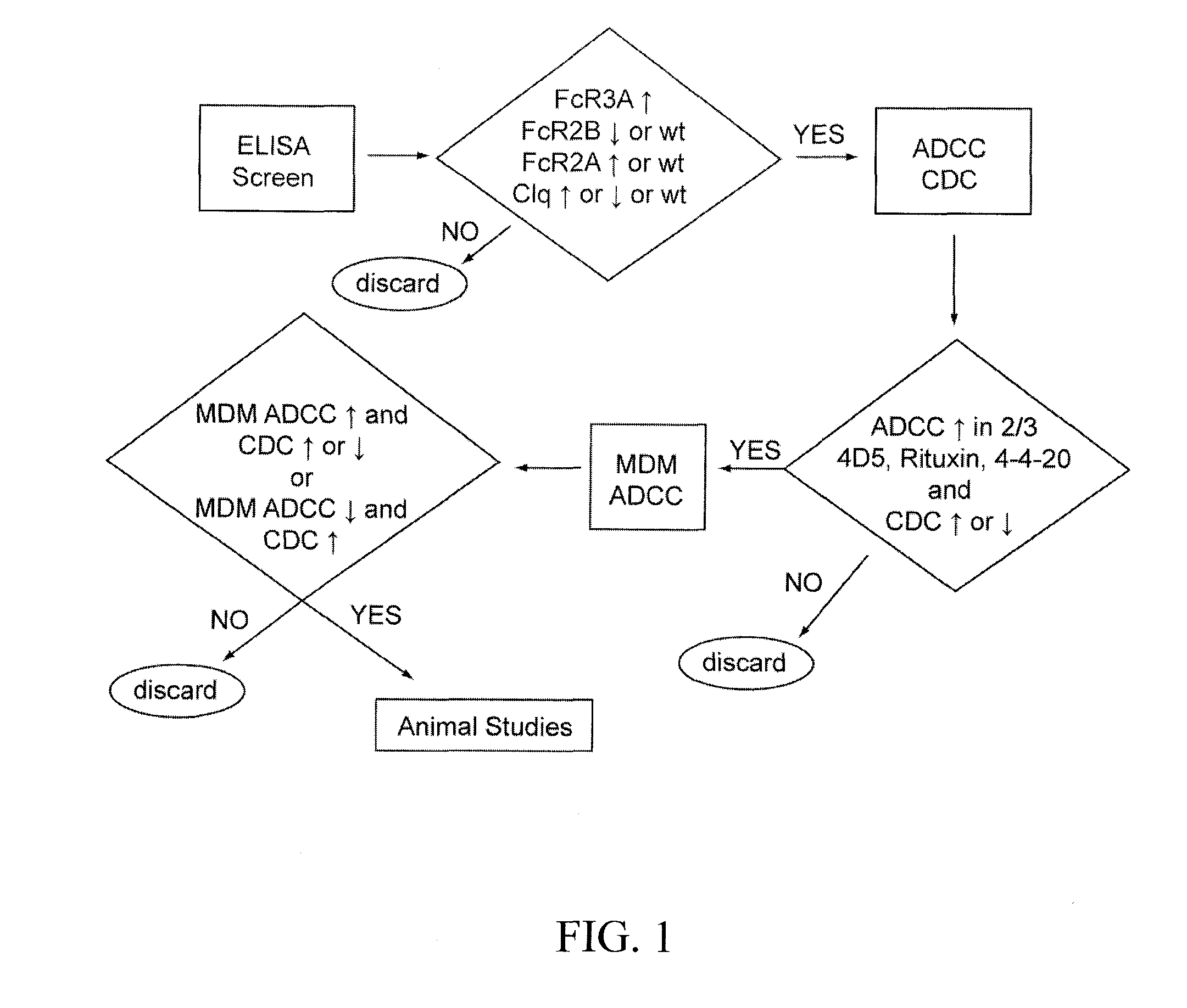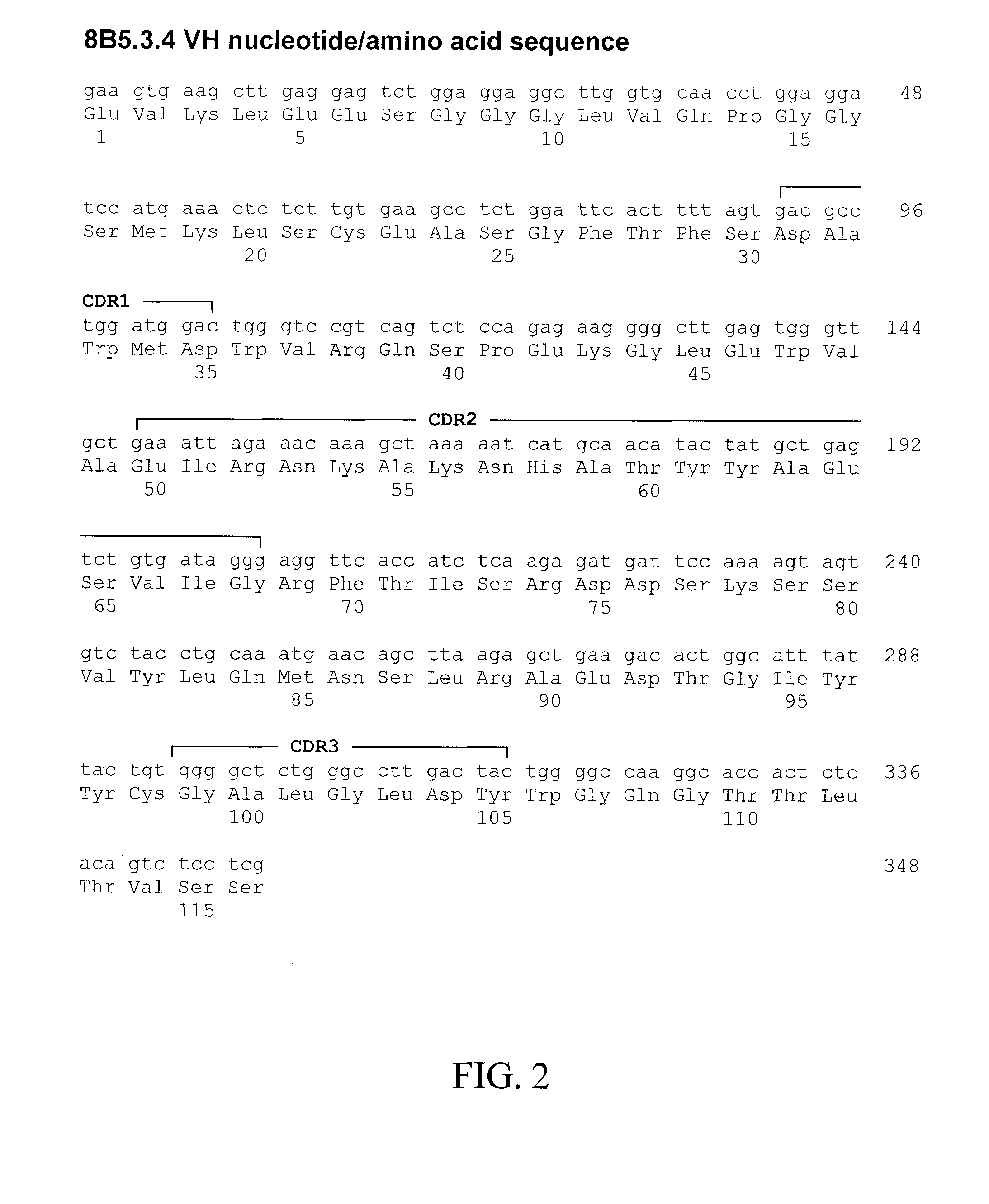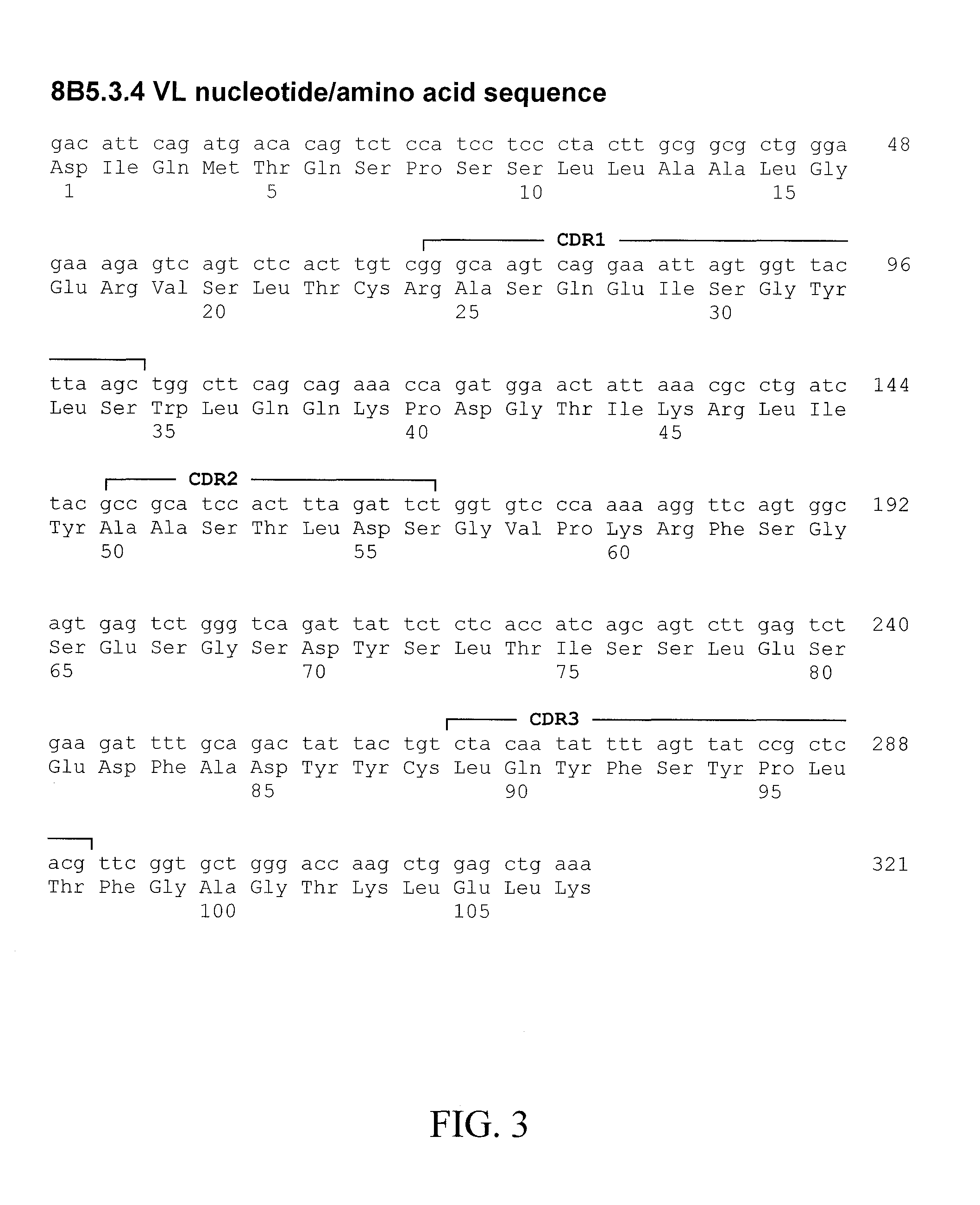[0045]The Fc variants of the present invention may be combined with other Fc modifications, including but not limited to modifications that alter effector function. The invention encompasses combining an Fc variant of the invention with other Fc modifications to provide additive, synergistic, or novel properties in antibodies or Fc fusions. Preferably, the Fc variants of the invention enhance the
phenotype of the modification with which they are combined. For example, if an Fc variant of the invention is combined with a
mutant known to bind FcγRIIIA with a higher affinity than a comparable molecule comprising a
wild type Fc region; the combination with a
mutant of the invention results in a greater fold enhancement in FcγRIIIA affinity.
[0074]In certain embodiments, the invention encompasses methods for screening and identifying therapeutic and / or prophylactic molecules comprising variant Fc regions with altered FcγR affinities (e.g., enhanced FcγRIIIA affinity) using
yeast surface display technology (for review see Boder and Wittrup, 2000, Methods in Enzymology, 328: 430-444, which is incorporated herein by reference in its entirety).
Yeast surface display of the
mutant Fc containing polypeptides of the invention may be performed in accordance with any of the techniques known to those skilled in the art or described herein (see, e.g., U.S
Patent application Publications 2005 / 0037000 and 2005 / 0064514, and International
Patent Application Publication WO 04 / 063351, each of which is hereby incorporated by reference in its entirety).
Yeast display offers the
advantage of utilizing actual binding to a desired
receptor to identify variant Fc regions that have enhanced binding to that
receptor.
[0092]In a specific embodiment, modification of the anti-FcγRIIB
antibody may also decrease the affinity of the Fc region for FcγRIIB relative to the wild-type antibody. In yet another specific embodiment, the engineered anti-FcγRIIB antibody may further have an enhanced effector function as determined by standard assays known in the art and disclosed and exemplified herein. In a specific embodiment, the anti-FcγRIIB
monoclonal antibody comprises a modification at position 334 with
glutamic acid, at position 359 with
asparagine, and at position 366 with
serine (MgFcl3); or a substitution at position 316 with
aspartic acid, at position 378 with
valine, and at position 399 with
glutamic acid (MgFc27); or a substitution at position 243 with
isoleucine, at position 379 with
leucine, and at position 420 with
valine (MgFc29); or a substitution at position 392 with
threonine and at position 396 with
leucine (MgFc38); or a substitution at position 221 with
glutamic acid, at position 270 with glutamic acid, at position 308 with
alanine, at position 311 with
histidine, at position 396 with
leucine, and at position 402 with aspartic (MgFc42); or a substitution at position 410 with
histidine, and at position 396 with leucine (MgFc53); or a substitution at position 243 with leucine, at position 305 with
isoleucine, at position 378 with
aspartic acid, at position 404 with
serine, and at position 396 with leucine (MgFc54); or a substitution at position 255 with
isoleucine, and at position 396 with leucine (MgFc55); or a substitution at position 370 with glutamic acid, and at position 396 with leucine (MgFc59); or a substitution at position 243 with leucine, at position 292 with
proline, at position 300 with leucine, at position 305 with isoleucine, and at position 396 with leucine (MgFc88); or a substitution at position 243 with leucine, at position 292 with
proline, at position 300 with leucine, and at position 396 with leucine (MgFc88A); or a substitution at position 234 with leucine, at position 292 with
proline, and at position 300 with leucine (MgFc155); or a substitution at position 243 with leucine, at position 292 with proline, and at position 300 with leucine; or a substitution at position 243 with leucine, at position 292 with proline, and at position 396 with leucine; or a substitution at position 243 with leucine, and at position 292 with proline; or a substitution at position 243 with leucine; or a substitution at position 273 with
phenylalanine; or a substitution at position 247 with leucine, at position 270 with glutamic acid, and at position 421 with
lysine. In a related embodiment, the variant Fc region further comprises one or more amino acid modifications disclosed in tables 4, 5, 9, and 10, infra.
[0102]According to one aspect of the invention, molecules of the invention comprising variant Fc regions have an enhanced antibody effector function towards an
infectious agent, e.g., a pathogenic
protein, relative to a comparable molecule comprising a wild-type Fc region. In a specific embodiment, molecules of the invention enhance the
efficacy of treatment of an infectious disease by enhancing
phagocytosis and / or opsonization of the
infectious agent causing the infectious disease. In another specific embodiment, molecules of the invention enhance the
efficacy of treatment of an infectious disease by enhancing ADCC of infected cells causing the infectious disease.
 Login to View More
Login to View More 


